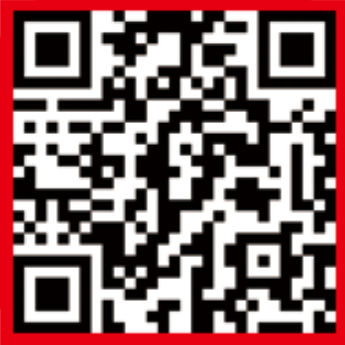86 22-26907986
tjksales@tjkmachinery.com

Introduction to Main Points of Truss

1. Connection method
Steel trusses can be connected by welding, plain bolts, high strength bolts or riveted joints. Both welding and truss girder welding machine are widely used.
2. Depth-span ratio
The height of steel truss is determined by economy, rigidity, usage and transportation requirements. Increasing height can reduce the cross section and deflection of chord, but it can increase the dosage of abdominal bar and building height.
3. Web member system
The web members of the steel truss are usually herringbone or monoclinic. The number of web members and the number of nodes of herringbone abdominal bar are few and all of them are widely used. In order to reduce the internode dimensions of chord strings or loaded chords, we always add some vertical rods. The monoclinic abdominal bar is usually arranged to pull the longer diagonal member, and the short vertical bar is pressed, sometimes it is used for the larger span steel truss. If the length of the string and abdominal rod is further reduced, the re divided abdominal rod system can be adopted. We can use the K type or rhombic ventral rod system for the high height of the steel truss and the hourly internode.
4. Stress characteristics
The cross section centroid axis of each member of the steel truss should intersect at the node, and the internal force calculation should be usually carried out according to the articulated truss. When the truss is only subjected to node loads, all members are subjected to axial tension or pressure only; if they are also subjected to loads within the member joints, the members will be bent at the same time.
5. Supporting system
In order to ensure the stiffness and stability of the plane steel truss outside the plane of the truss, we should reduce the calculation length of the string outside the plane of the truss, and bear the possible lateral loads, we also should lay the support on the steel truss side. Supporting are usually divided into 3 types: horizontal (upper and lower chord plane, horizontal and vertical), vertical (truss ends and middle) and tie type. A pair of steel trusses can be arranged horizontally along the lower string and the upper chord plane, and the vertical support is arranged at each end of the steel truss and in the middle of the vertical bar.
6. Cross section design of rod
The steel truss tension bar shall meet the requirements of strength and allowable slenderness ratio, and the compression bar shall meet the requirements of strength, stability and allowable slenderness ratio. When calculating the strength and stability of the members, the internal force should be considered according to the axial force; when the members are subjected to both axial force and bending moment, the joint action should be considered according to the eccentric force.
7. Truss arching
A steel truss with a slightly larger span, in order to offset all or part of the deflection under the action of self weight and load, usually stipulates that the arch should be preformed in advance. The arch of the roof (f) is generally 1/500 of the span.
Steel trusses can be connected by welding, plain bolts, high strength bolts or riveted joints. Both welding and truss girder welding machine are widely used.
2. Depth-span ratio
The height of steel truss is determined by economy, rigidity, usage and transportation requirements. Increasing height can reduce the cross section and deflection of chord, but it can increase the dosage of abdominal bar and building height.
3. Web member system
The web members of the steel truss are usually herringbone or monoclinic. The number of web members and the number of nodes of herringbone abdominal bar are few and all of them are widely used. In order to reduce the internode dimensions of chord strings or loaded chords, we always add some vertical rods. The monoclinic abdominal bar is usually arranged to pull the longer diagonal member, and the short vertical bar is pressed, sometimes it is used for the larger span steel truss. If the length of the string and abdominal rod is further reduced, the re divided abdominal rod system can be adopted. We can use the K type or rhombic ventral rod system for the high height of the steel truss and the hourly internode.
4. Stress characteristics
The cross section centroid axis of each member of the steel truss should intersect at the node, and the internal force calculation should be usually carried out according to the articulated truss. When the truss is only subjected to node loads, all members are subjected to axial tension or pressure only; if they are also subjected to loads within the member joints, the members will be bent at the same time.
5. Supporting system
In order to ensure the stiffness and stability of the plane steel truss outside the plane of the truss, we should reduce the calculation length of the string outside the plane of the truss, and bear the possible lateral loads, we also should lay the support on the steel truss side. Supporting are usually divided into 3 types: horizontal (upper and lower chord plane, horizontal and vertical), vertical (truss ends and middle) and tie type. A pair of steel trusses can be arranged horizontally along the lower string and the upper chord plane, and the vertical support is arranged at each end of the steel truss and in the middle of the vertical bar.
6. Cross section design of rod
The steel truss tension bar shall meet the requirements of strength and allowable slenderness ratio, and the compression bar shall meet the requirements of strength, stability and allowable slenderness ratio. When calculating the strength and stability of the members, the internal force should be considered according to the axial force; when the members are subjected to both axial force and bending moment, the joint action should be considered according to the eccentric force.
7. Truss arching
A steel truss with a slightly larger span, in order to offset all or part of the deflection under the action of self weight and load, usually stipulates that the arch should be preformed in advance. The arch of the roof (f) is generally 1/500 of the span.
Related News
-
What are the Actual Advantages of CNC Rebar Stirrup Bending Machine?
October 18, 2020CNC rebar stirrup bending machine adopts high precision servo drive with close loop control, driven by servo motor or servo hydraulic system. It changes traditional multi-link steel processing mode ce...view -
Correct Use Rebar Bending Machine to Ensure the Safety of Personnel
October 28, 2018With the development of science and technology, new products of high technology are emerging in many industries. The rebar bending machine is simple to use and easy to operate. But any engineering equ...view -
Analysis of the Four Parts of the Rebar Straightening Machine
April 15, 2021Rebar is one of the most frequently used auxiliary materials in the construction industry. In construction engineering, rebar will inevitably be straightened, bent, cut and other operations. At this t...view -
Key Points in Maintenance of CNC Welding Machine
July 30, 20191. The operator of the platoon welding machine in the wire mesh welding line shall not touch any part of the body or any object near the gears, transmission grooves, sprockets, belts, chains, straight...view -
Important Matters for the Use of Rebar Cutter
September 13, 2018How can we improve work efficiency while operating a rebar bender and cutter?view -
How to Use Wire Mesh Welding Machine Correctly
July 27, 2019Detailed explanation of the working principle of the wire mesh welding machineThe daily circuit is closed so that the entire closed circuit and the current are equal everywhere; but the resistance in ...view
- TEL:+86 22-26993766
- FAX:+86 22-26997888
- EMAIL:tjksales@tjkmachinery.com
- ADDRESS:Wuwei Rd., Lulugang Logistics Industrial Park, Tianjin, China
- Sitemap Privacy Policy
- Copyright © TJK Machinery (Tianjin) Co, Ltd All Rights Reserved








